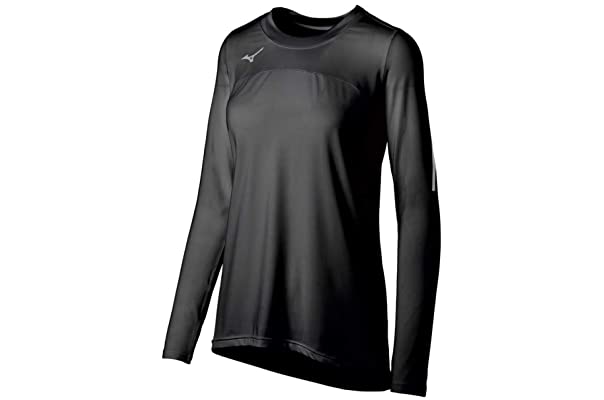Volleyball games comprise six players for each team, of which five team members wear same-colored jerseys whereas the sixth one wears a contrasting black volleyball jersey. The jersey color for the sixth member could be black, brown, blue, red, or whatever suits them right. Any volleyball team consists of the defensive and offensive players along with a libero to complete the squad. The defensive players are generally placed at the rear end or at the center whereas the offensives are strategically placed on the front side of the net, immediately behind the dividing volleyball net.
That leaves behind the libero, who is tactically the most involved player in the entire team for both sides. The libero moves all around the team’s placements and primarily serves as a specialist in defending opponents’ kicks and jabs and making moves for the offense. Liberos are often called ‘ball passers’ as they are not allowed to push the ball out of their team nets. They are strictly prohibited to launch offenses across the volleyball nets; however, their main purpose is to make up moves for other team members who ultimately launch the ball to the opponent’s side of the net.
Who are Liberos?
According to the FIVB rules book, a libero player is defined as – a specialist defensive player who is free to move around their team’s court to block and pass the volleyball and is accepted to switch positions with their substitute at any time during the play. According to FIVB rules, liberos cannot serve the ball, spike the ball, or attach it to the opponent’s court or when the ball is higher than the top of the net. Liberos are placed by most of the teams to the center or rear end where the defense seems weaker compared with the front position which is closer to the dividing net.
Why Liberos Wear Different Jerseys?
The game rules for liberos are somehow different than for other players in volleyball. As per FIVB guidelines, there must be six substitutions for each team during the game. For liberos, who are usually two in each squad, the substitution limit is infinite, which means that liberos can be substituted as many times as management deems necessary during the game. The special privilege afforded to liberos by International Volleyball Federation is because of the exertive task they must undertake during the contest. Liberos move around all over the court to defend or arrange critical moves for the offensive throughout the game.
Florida Gator’s Libero defending the ball
To recognize liberos, a differently black volleyball jersey works great for spectators and match referees. This help judges in identifying substitutions during the match and in recognizing foul play if any. There’s no obligation to the color combination liberos must wear during the game. However, in practice, liberos wear contrasting jerseys than their teammates to get distinguished by fans and judges. If the team wears light jerseys, liberos might wear dark blue, red, or black jerseys. Similarly, if the team jerseys are darker in shade, liberos wear off-white, light blue, or light green combinations.
How Volleyball Liberos are the Similar to Soccer Goalies?
The concept of wearing contrasting jerseys from their team members is applied in both men’s and women’s volleyball teams. FIVB strictly imposes its regulations on making sure that players’ portfolios never mix up during the game in support of fair play and better judgment. Additionally, Liberos are somewhat similar to the goalies in soccer. The primary objective for both goalies and liberos is to defend their position and to support the defense or sometimes the offense to carry on the moves accordingly with the game situation. Goalkeepers in soccer also wear contrasting black volleyball jerseys and are obstructed from passing the ball as other players do.






